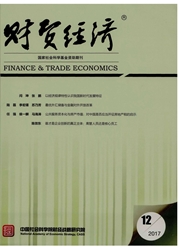

 中文摘要:
中文摘要:
我国《预算法》明确规定地方政府不得发行地方政府性债券,但为实现社会经济发展,地方各级政府在财力有限的情况下大量举借债务,忽视了地方经济发展的承债能力,从而形成地方政府债务风险的隐患。本文首先基于社会福利最大化悖论分析我国地方政府性债务的风险生成机制,在此基础上,从债务内部结构和外部负担两方面构建我国地方政府性债务风险指标体系,并通过对西部某省经验数据的因子综合评价和时间趋势分解,判断地方政府性债务总体风险及结构来源。最后,针对研究结论提出相应的政策建议。
 英文摘要:
英文摘要:
According to Budget Law of People's Republic of China, local governments have no rights to issue bond. In order to achieve the aim of eco-social development, local governments have borrowed a large amount of debts beyond the capacity of their limited financial resources, ignoring the debt paying ability in local economic development. In this case, the expansion of debt scale will incur hidden troubles. From the paradox of social welfare maximization, the authors analyze the formation mechanism of the debt risk of local government. Then they set up the index system from internal structure and external burden of debt. After carrying out an empirical measurement of one western province with the method of comprehensive factor analysis and time series data decomposition, the paper makes a judgment of the general tendency and source structure of the debt risk of local government. In the end, it puts forward some corresponding policy suggestions according to the research conclusions.
 同期刊论文项目
同期刊论文项目
 同项目期刊论文
同项目期刊论文
 期刊信息
期刊信息
